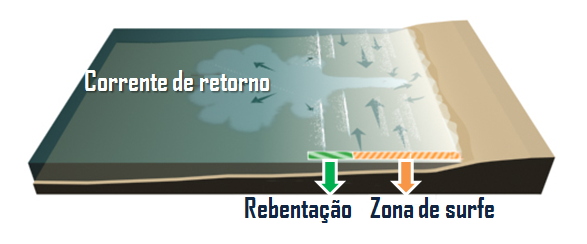Wild weather evacuations: hundreds flee flooding and coastal erosion
Evacuation notices issued across New South Wales as east coast low pressure cell leaves Queensland and passes down the coast
Dangerous flooding and severe weather conditions have forced hundreds to evacuate their homes across Australia’s east coast, with poor weather conditions set to continue into Monday.
On Saturday weather warnings were issued from the Gold Coast in Queensland down to southern New South Wales, as an intense low pressure system created gale force winds and high rainfall that battered the east coast.
Conditions did not ease and continued into Sunday. The New South Wales State Emergency Service issued a number of evacuation warnings as a result of flooding.
The heavy rainfall and gale-force winds led to widespread power outrages, blocked roads and damages to homes from falling trees.
Flood evacuation notices were issue across NSW in areas including Lismore, the Cooks River, the Georges River, parts of the NSW north coast and Fingal Head. Later in the day low-lying parts of Sydney’s southwest were also told to leave, including Chipping Norton, Milperra, Lansvale and Carramar, as the Georges River rose.
Residents were told to gather medicines, pack clothing and try to turn off power and gas.
The severe weather conditions crept right across Sydney’s suburbs, with storm tidal waters coming dangerously close to houses on the northern Sydney suburb of Narrabeen, where a caravan park and some houses were evacuated.
The CBD of Lismore on the NSW north coast was also issued with an evacuation order by the SES, as floodwaters continued to rise.
Poor weather conditions are set to continue into Monday in New South Wales and Tasmania, with the latest Australian Bureau of Meteorology forecast indicating there will be “high to very high chance of rain heavy at times in the far southeast” and “Strong to gale force east to northeast winds on the south coast.”
Heavy rain and strong northeast winds affected much of Tasmania on Sunday, particularly in the north, with wind gusts of up to 90km/h and up to 120mm of rain.
The severe weather was expected to continue on Monday and possibly extend into Tuesday, and the Tasmania SES urged residents to avoid damaging surf on coastal beaches.
NSW State Emergency Service acting deputy commissioner Mark Morrow said on Sunday in a press conference that conditions were likely to remain poor.
“I can’t tell you whether it will get beyond the predictions that we have got at the moment but certainly the Bureau is continuing to work very closely with our deputy incident controllers in order to make informed decisions particularly in those areas where lots of Sydney residents live on the other side of a river system which potentially cuts them off from the metropolitan area,” he said.
“But it’s a good idea now to think about work from home or talk to your boss about other arrangements.”
NSW police confirmed one person was charged with drink driving. Police alleged the driver had ignored road closures and driven into floodwaters in southern NSW.
NSW police also urged visitors to Sydney to delay attending the Vivid festival and Sydney Harbour due to the serious weather risks that remained.
Destination NSW chief executive and Vivid Sydney executive producer Sandra Chipchase said: “Vivid Sydney’s priority is always the safety of its patrons and with this in mind, we need to close some of the festival precincts and light installations this Sunday night and we encourage visitors to postpone their trip until the weather improves.
“We want to thank Vivid Sydney fans for their patience and understanding as we continue to manage the impact of this weekend’s extreme weather.”
The storm by numbers
• 70-90mm rain across Sydney with 115mm recorded at Ingleburn
• 154mm rain at Robertson in Illawarra region
• 12-metre waves recorded at Botany Bay
• Dangerous five-to-seven metre waves predicted along NSW coast
• Destructive winds gusting up to 125km/h forecast
• About 500 people across state ordered to leave homes
• Power out to at least 86,000 homes and businesses across the state, with 60,000 affected in Illawarra region
The Guardian


Comentários
Postar um comentário